Fully winterised
This week: Fully winterised; Guttering; Courtyard work; Shake, Rattle and Roll; Planting for spring; Still in flower; Wet weather;

The nights are really drawing in. Thick dark clouds combined with the early setting of the sun ( 16:20 ) mean that by 16:00 I need lights on inside.
But it is still mild enough not to need the heating on. The lowest overnight temperatures are still around 10ºC or more and both the highs and lows are still above the average.
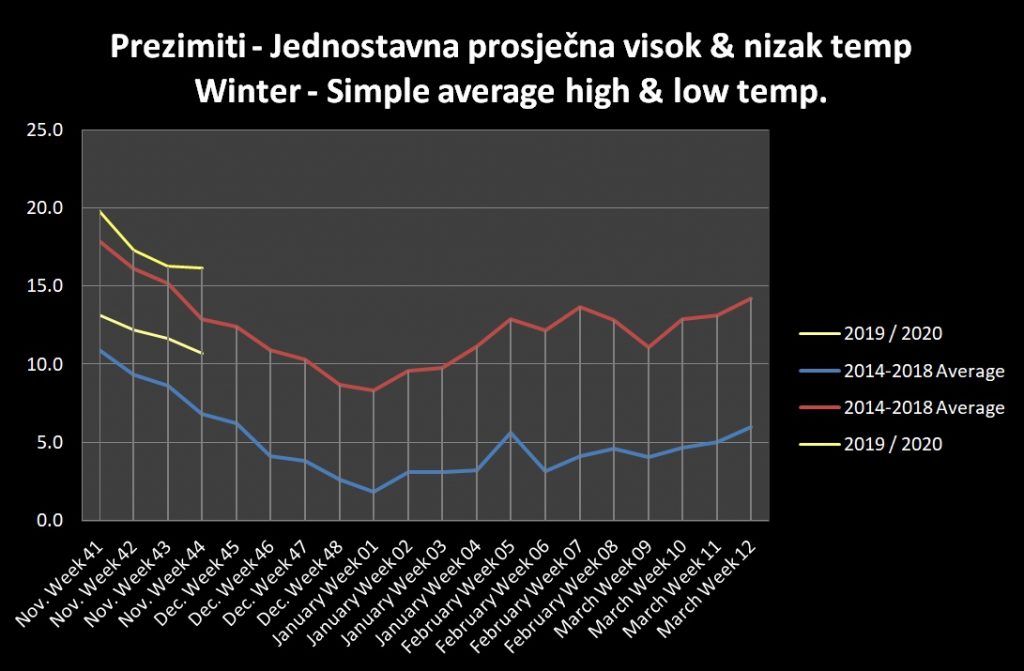
However I need to think about what plants I will bring into the restricted space of my greenhouse to protect them from the mid-winter cold that we get around New Year. Things like my young California Gold Bougainvillea.
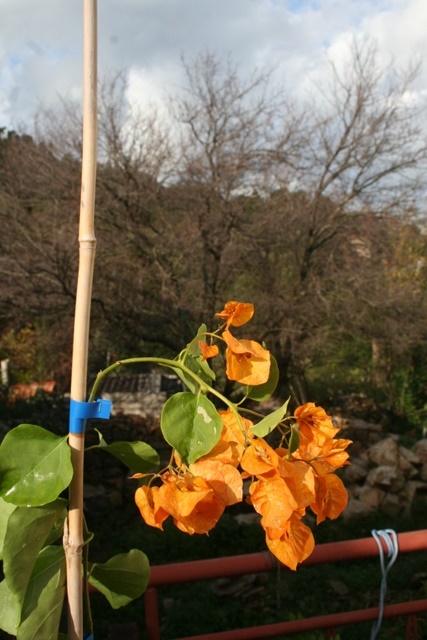
This is the 49th blog of 2019. A quick check of the calendar shows there are four more Saturdays before the 1st January 2020.
I will be missing a week next week, while I do some update work on the website. So the next edition will be in a fortnight, on the 14th December.
But fear not, you will still get 52 blogs in 2019. It’s just the way that Saturdays fall. Some years there are 52 and some there are 53. 2019 is one of the latter.
Fully winterised
I’m really fed up that the failure to even start my building work impacts so many areas. I’ve addressed and completed three winterising tasks this week.
Depending on the wind direction, a small amount of rain has leaked under the doors into my workshop. There is a drain in the floor by the door, so it has not caused me any problems other than damp. As all my tools are in the workshop, dampness means corrosion.
This doorway will eventually be under the lounge and I’ve put off doing more than putting a board over the step to keep the worst out. Until this week that is. With the rain we have had this month, I decided to make a lip on the outside of the door to deflect the rain away.
I have some bags of cement and there is more sand than I know what to do with in the courtyard. With a half bucket riddled, I added cement at a 3:1 ratio and mixed up some fairly strong mortar.
I put a length of kitchen cling film on the bottom of the doors as protection. Then I created a sloping fillet with the mortar on the outside. That will stop the problem of rain driving in under the doors..

Guttering
The next job was the guttering on the north side of the Konoba. This is another job I’ve put off and put off in anticipation of some building work starting.
However because the roof drains onto the ground, it has made the adjoining wall damp. This wall in the Konoba is below soil level.
The tradition in Dol and indeed on much of the island, is not to fit guttering. Rain drips off the stones, down the walls to the ground. It’s only on modern houses and in towns that you find building which have gutters.

This is one of the roofs which was repaced at the end of WWII. The Italian Fascista of Mussolini burnt the buildings of Dol and Vrbanj destroying the roofs. This was an act of retribution against the civil population.
So although the tiles are recent concrete, they are laid on the original 19th century stone slabs which are seated on the top of the walls.

I bought the guttering, fall pipe and connectors probably two years ago, so all I had to do was get them out of the store. Starting early on Monday, I drilled out the lime mortar exactly the width of a bracket under the slab.

This allowed me to slide the bracket in. I used a protractor to measure the angle and then bent the arm of the brackets to the right profile.

I needed a tungsten drill bit to make an additional bolt hole in the bracket. Finally I drilled and plugged the stone slabs, fixing the bracket firmly in place with a screw.
After installing two brackets I checked for a fall with a long level, then continued fitting brackets and guttering.

Finally I installed a funnel and a drainpipe to take the rain water away.
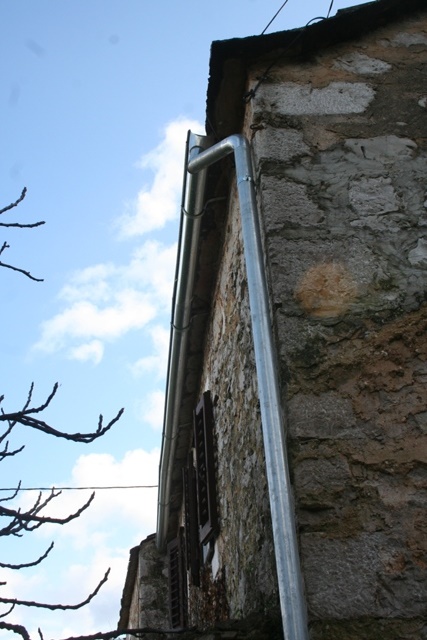
There is a gap at then because the stay for the electric pole is in the way and I wasn’t able to move it without destroying the clamps. Another job to do later…
I had anticipated it taking two days, but finished the job in one. I then actually wanted it to rain, so the system will be tested.

Courtyard work
Almost two years ago I installed a drain along the centre of the courtyard to harvest the rainwater. This underground pipe evacuates water to the Top Orchard.
What I noticed in the extreme rainfall event we had a week ago, was that some rain was pooling and not running to the drain entrance.
This courtyard will have nice stone slabs after the builders have finished. But until then, it will remain sandstone and pure sand.
I’ve now created two channels to bring the water from where it was pooling, to the drain. I had to use a pickax to break some of the sandstone chunks that are just below the surface. Fortunately it is soft and easily broken.

Like any water channel, it will silt up, but at least I can easily draw a mattock along the channels to clear them of debris. I’ll bring the car in now the work is over.
Shake, rattle and roll
In truth it was no more than a slight vibration, a bit like a truck driving past, be we were lucky. Around 04:00 on Tuesday morning there was a 6.4 magnitude earthquake in Durrës 300km to the south east in Albania.
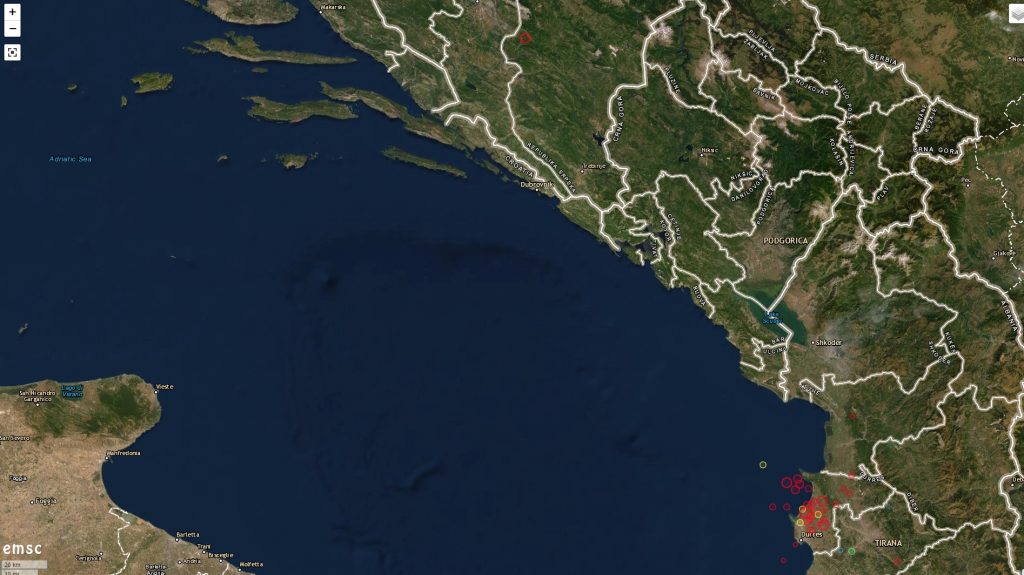
Many buildings collapsed or were damaged and currently the death toll stands at 50, with several hundred injured. Rescue teams were deployed from across the region but this has been the most deadly earthquake anywhere, so far in 2019
At 09:20 I felt my buildings shake, as a second earthquake hit the Mosdar area of Bosnia Herzegovina, just 100km to the east. This was recorded as having a strength of 5.4 and is on the same fault line.
The Adriatic sea sits on its own tectonic plate. The plate is ‘J’ shaped and is responsible for the volcanoes in western Italy. The eastern boundary of the plate is only about 50 kilometres to the east of Dol.
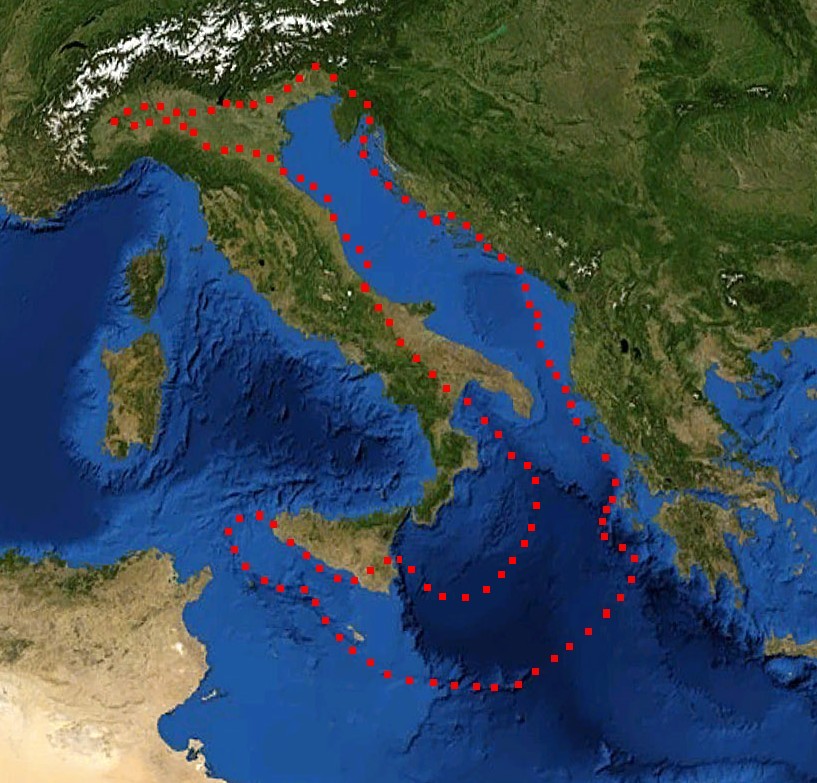
I’ve felt earthquakes in Dol before and all of the Balkan peninsula is prone to having them.
Planting for spring
With the weather being mild a lot of plants are still growing. While the early flowering fruit trees, like the plums, lost their leaves a few weeks ago, later varieties, apples, pears, apricots and peaches all still have their leaves.
That makes it difficult to prune them now. I don’t want wounds to bleed or let pathogens in, but also because of the volume of leaves, I really can’t see which bits I should be pruning.
After my trip over to Split last week, I planted the Snowdrops, Galanthus, and 36 bright yellow Crocus where they will be seen in the spring. I also had some Crocus Korolkowii which have gone into the Top Orchard.

The Korolkowii, unlike the majority of Crocus bulbs, are quite demanding. They like gritty, well drained soil – plenty of that in the orchard – and a very dry soil in summer.
This variety of Crocus originate in an area stretching from northern Pakistan to Russia. It is said that whole mountain sides turn yellow in the spring when they are in flower.
They are also one of the early flowering varieties. It will be interesting to see just how early they flower here.
Another group of bulbs I planted, but in a pot, are Fritillaria michailovskyl. I have tried various Fritillaria, with not much success, but then when I read up on this variety, they will not tolerate being waterlogged.
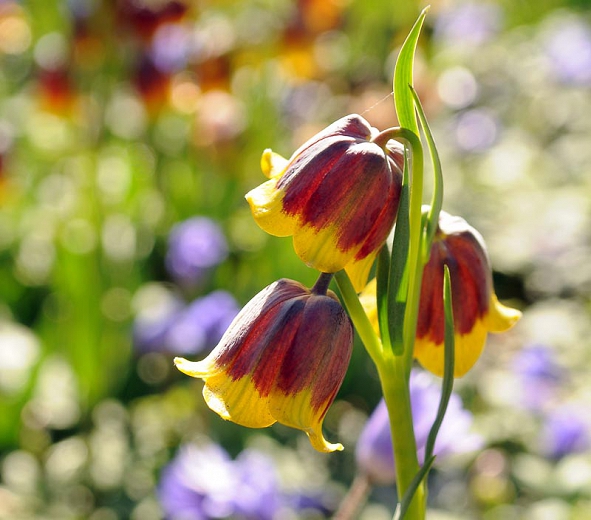
My clay soils get well and truly waterlogged in winter and bake to a frazzle in the summer. So I mixed up some sand, soil and potting mix in a large plant pot and put them in.
In a pot I should be able to control the soil moisture better. I look forward to a nice display in the spring, fingers crossed!
Still in flower
Although the nights are cooling, there are still a lot of plants which are in flower.
Alstromeria are a bulb with a long flowering period. They are not difficult to grow and will reward you with some very showy flowers.

In the flower bed I created in the spring, the Canna Lilies are still flowering. They will continue until we get a frost or several cold nights in the New Year.
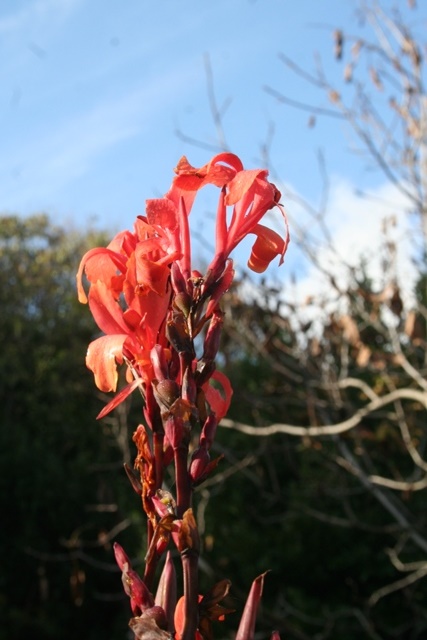
Several of the citrus in the orchard are now producing flower buds, so my shade netting must be doing something useful in the way of protecting them.
Wet Weather
We has a thunderstorm on Friday morning which dropped 12mm of rain. Then a second on Friday night recorded 16mm. So my wish for a test of my waterproofing efforts was answered and everything has worked as planned.
I found a BBC video this week which explains very clearly why warming of the Northern Pacific Ocean brings rain to Dol (and much of the rest of Europe).
It’s all down to the jetstream being bent out of it’s normal track at this time of year. This is allowing Atlantic weather systems to reach deep into Europe.
Tomorropw being the first of December, I can now say that in November, we have had 337 mm of rain or 337 liters per aquare metre. There have been 23 wet days in the month too. This is the highest number of wet days in any month since I have been here.
As I was listening to Gardeners Question Time (GQT) on Friday afternoon, which included a lively discussion about polly-tunnels, I heard thunder. A quick look at the Blitzortung dynamic storm tracker, and I could see it was over Brač, in a line running due east-west.
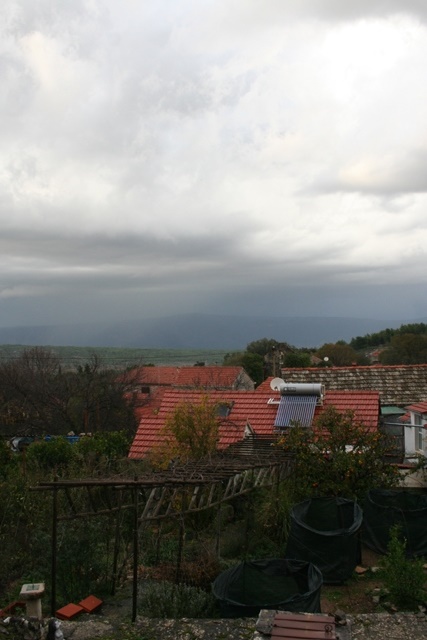
Here in Dol, 12 kilometres to the south, we didn’t have a drop of rain, so the monthly total could have been much higher.
Having said that, as the chart shows, we are way above the average for this time in the winter rain period.

With an average of 84 litres per metre² each week in November, that is more than double the size of your average car petrol tank. There is no wonder my soils are sodden.
When you look at the profile for 2019, it has been a year of “drought and flood”. There were several periods with above seasonal average for rain. We also several periods where we were below the seasonal average for rain.
I suspect that that would apply to much of Europe (and probably the rest of the world). What was once a fairly average seasonal chart, is now showing alternating periods of extremes.
This I think is the new “normal” where change is very much the constant. NRC